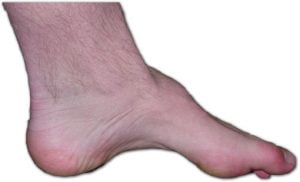 Charcot-Marie-Tooth disease is considered to be the most commonly inherited peripheral neuropathy affecting approximately one in 2500 adults. Unfortunately, the general public and even many health care professionals are not familiar with the disease, its symptoms, and recommended treatments. The Hereditary Neuropathy Foundation website www.hnf-cure.org offers a wide range of information on all issues related to CMT.
Charcot-Marie-Tooth disease is considered to be the most commonly inherited peripheral neuropathy affecting approximately one in 2500 adults. Unfortunately, the general public and even many health care professionals are not familiar with the disease, its symptoms, and recommended treatments. The Hereditary Neuropathy Foundation website www.hnf-cure.org offers a wide range of information on all issues related to CMT.
What is a Hereditary Neuropathy?
The term “hereditary neuropathy” is a mouthful, but it simply refers to a group of debilitating genetic diseases, which currently has no cure. In many cases, these diseases lie dormant, exhibiting no symptoms. In other cases, these diseases can impair the motor, sensory, and peripheral nerves of the hands and feet. Hereditary neuropathies can cause either the loss or disturbance of sensation in hands, feet, and limbs, and, over time may cause a wasting of the muscles, especially in the extremities.
There are many types of hereditary neuropathies. Symptom onset and severity differ, even within the same family. Nonetheless, hereditary neuropathies are all progressive; patients report losing strength, agility, dexterity, and even the ability to walk without assistance, making the diseases hard to accept on a psychological basis as well as a physical one.
Charcot-Marie-Tooth disease (CMT) is the most common hereditary neuropathy in the world, affecting millions worldwide; it is named after the three doctors who discovered it. There are four types of CMT; types 1 and 2 also have subtypes. CMT1A is the most common form of CMT, representing seventy-five percent of CMT patients. In some types of CMT, the myelin sheath that transmits nerve impulses to and from the brain is damaged, causing nerve impulses to be conducted more slowly. In other types of CMT, the axon itself is damaged and, although the conduction is nearly normal, the strength of the nerve impulses is reduced. All forms of CMT can result in muscle wasting and a decrease in motor and sensory function.
What Causes CMT?
CMT is usually genetic, affecting sixty to seventy percent of family members. However, recent testing has found the rate of spontaneous mutation to be at thirty percent. In all cases of CMT, a gene malfunctions and the result is CMT. In most types of CMT, the malfunctioning gene has been identified; however, the cause of the malfunction is unknown.
What are the symptoms of CMT?
CMT presents differently in each person and the severity of symptoms can vary greatly, even between members of the same family. However, here is a list of some common symptoms of CMT.
- Very high arches
- Hammertoes
- Foot drop
- Fatigue
- Clumsiness
- Awkward gait
- Burning sensation in hands and feet
- Pins and needles and numbness
- Hand cramps & leg cramps
- Loss of balance
- Tripping and Falling
- Weak ankles and other weaknesses in extremities
- Decreased ability to stoop, squat, kneel, jump, climb, or run
- Difficulty grasping and holding objects and opening jars and bottles
Who is affected by CMT?
CMT strikes millions of people worldwide, regardless of ethnic background or gender. It is estimated that at least 125,000 people in the United States suffer from Charcot-Marie-Tooth, although experts in the field think that number is much, much higher. The discrepancy stems from ignorance about Charcot-Marie-Tooth and hereditary neuropathies, not only on the part of the public, but also on the part of the medical community itself. Shockingly, many people suffering from Charcot-Marie-Tooth undergo years of testing before being diagnosed with the disease because most doctors cannot recognize the symptoms and accurately diagnose it.
What does CMT do?
With all types of CMT, the nerve signals are disrupted or weakened, resulting in severe muscle wasting and pain. Often, the muscle wasting happens unevenly, which causes deformity as opposing muscles atrophy at different rates. In many cases, the symptoms are mild and an altered gait can be corrected with a properly fitting orthodic. In more severe cases, people with CMT must wear braces or use a wheelchair to get around. In the worst cases, CMT can impair breathing and cause death.
Are there any treatments for CMT?
While there are no drug treatments for CMT, regular moderate exercise can help CMT patients preserve the form and function of their affected muscles. In addition, it is believed that early surgical intervention can help prevent deformity, greatly improving quality of life and mobility. Anyone with CMT or a genetic history of CMT should be vigilant about avoiding contraindicated drugs. As with any exercise or treatment program, people with CMT should consult their physician before embarking on any course of action.
How is CMT diagnosed?
Besides a genetic predisposition, there are a variety of physical indicators, such as foot deformities, fatigue, muscle weakness, and hammertoes that lead a patient to suspect that he or she may have CMT. Many forms of CMT can be diagnosed through a simple DNA blood test analysis. This is by far the least invasive way to learn this important information. CMT can also be diagnosed with an Electromyogram or EMG. This is a two-part test and can be slightly uncomfortable.
Can CMT ever be misdiagnosed?
CMT patients are often misdiagnosed with other neuromuscular diseases or told that they are crazy and that the symptoms are psychosomatic. This leaves them in medical limbo, unable to get the care and treatment they desperately need. This is extremely dangerous because many medications are contra-indicated and thus, very dangerous for people with Charcot-Marie-Tooth. Taking the wrong medication or supplement can accelerate or even initiate the progression of the disease, causing acute onset.
Where can I receive treatment?
In September 2006, HNF opened the Cedars-Sinai/HNF CMT Center at the Cedars-Sinai Medical Center in Los Angeles, CA. At the CMT Center, patients can explore treatment options and participate in relevant studies.



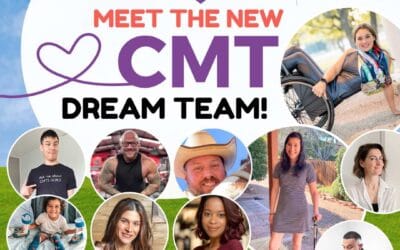

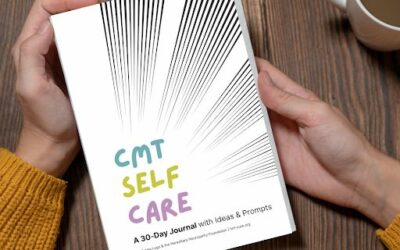
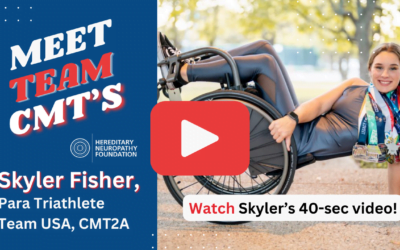
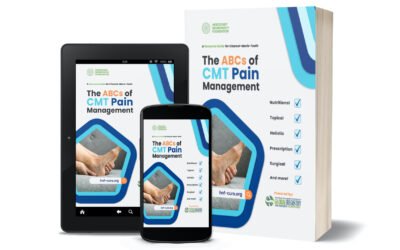
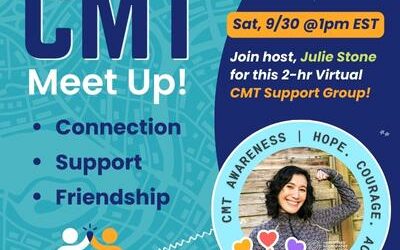


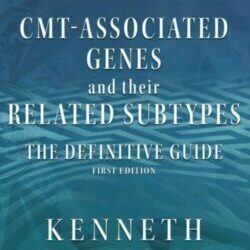

I have CMT and have hade it my hole life
My sister is the only one out of the four of us that has been diagnosed with CMT. Why is she the only one that has CMT?
My husband has CMT1A and we’re trying to figure out how many people in Ohio have been diagnosed with CMT. We’re trying to potentially find his birth mother since we know the mother is the carrier.
I am in 7th grade and we are doing a project is there anything anyone can tell me please it will be very helpful.
I have been diagnosed with CMT. I am 50 years old. No one in my blood related family has had CMT. Is this situation possible?
Yes, I believe in this article it said that spontaneous mutation can occur (which means you get CMT without inheriting it)
I’m 27 found out my mom had it and not me. Now I’ve done the tests and have been diagnosed with aggressive cmt1a. I can’t feel my feet or hands and have lots of shooting random pain. My doctor gave me meds and it has helped. My hands curl when sleeping and my feet are high arched. Unfortunately braces do not work. I may get fusion surgery on feet and ankles. They say light stretching helps but not for aggressive cmt. Has anyone gotten the fusion operation that has any info or help?
I had bone fusion done on both of my feet when i was 13 years old. Now i’m 32 years old and i feel great. Of course i cannot run but i can walk and move without discomfort. Best of luck to you
I was diagnosed with crps. But aftet reading this cmt i believe i have this. I have lost the feeling in the right foot and half in the left i also fit all sysmptoms of cmt. Steven Ackron
I have CMT for 15yrs or more I am 67 and now I’m going down hill I get up in the morning I have pain all over
Where does one receive a verifiable diagnosis regarding this condition? Would t-cell treatment be useful in dealing with it?
I have 2 step sons with CMT. They are 12 & 14. They both wear leg braces, both have hammer toes, and both there hands are curling into their fists. I feel like we are just watching this happen! What can we do? Please help!
Tammy,
Please make sure you take the time and register them in the Global Registry. It will take about 30 minutes https://neuropathyreg.patientcrossroads.org/
Cmt runs in my family… my mom has it. I’m 27 now, what are my chances of getting it? My mom was diagnosed at 38
My doctor know nothing of Chariot Marie so tells me nothing is wrong I’m in such pain I’ll be 60 soon have worked hard all my life no longer do I have strength, but I hurt so bad .
Eva,
I am so sorry you are in pain. Please look for support at https://www.inspire.com/groups/charcot-marie-tooth-cmt/.
Courtney